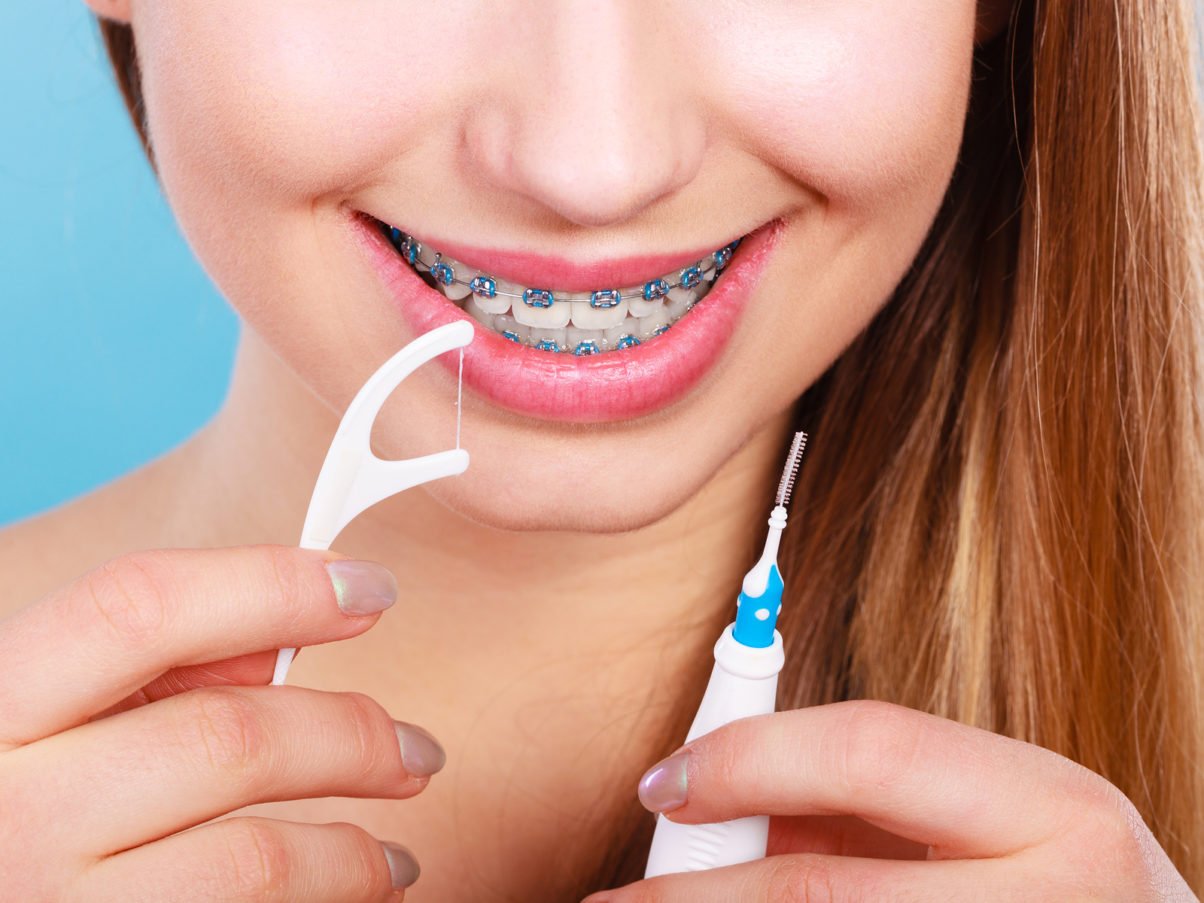Many people have difficulty flossing on a regular basis. This challenge becomes even harder when they have braces. Orthodontic care can help provide straight, attractive smiles; but it takes a strong commitment to make sure teeth stay healthy during treatment. Here are some tips to make the flossing process easier while you have braces.
Choose an appropriate tool
Sliding ordinary floss between your teeth and the wire of your braces is akin to threading a needle. A floss threader is a disposable and inexpensive solution to flossing with braces. Available at most grocery and drug stores, these handy tools are ideal for people with braces because they let you pull floss above the wire, through teeth and up to the gum line. According to the American Association of Orthodontists (AAO), you can also use single-use packets of “pre-threaded” floss to achieve the same effect.
Try a waxed floss
Non-waxed dental floss is more likely to snag on braces and leave behind traces of floss. When flossing with braces, it’s generally best to use a waxed floss in conjunction with a floss threader, which will more easily slip between each tooth without snagging. As you work, gently slide the string of floss up into the gum line of both teeth. Then, remove the floss and threader before moving on to the next tooth.
Supplement with an electric flosser
These devices (such as a Waterpik or an AirFloss) inject a thin stream of water, or air and water, to help clean between teeth and along the gum line. While anyone can use them, electric flossers can be especially helpful for people with braces. Some manufacturers provide specialized tips for orthodontia. These tapered attachments can make it easier to clean and rinse around brackets. If you’d like to try using an electric flosser but aren’t sure which type to choose, ask your orthodontist, a general dentist or dental hygienist for recommendations based on your unique requirements.
Try using a proxy brush
While they shouldn’t be a substitute for flossing, proxy brushes can help supplement your cleaning routine. Small, flexible brushes that look somewhat like a tiny pine tree, proxy brushes have a unique shape that allows them to slip behind braces. Simply insert the brush beneath the wire and between the teeth. If you wish, you can add a small amount of toothpaste to the proxy brush for better cleaning. Just remember that, while they can assist in the cleaning process, proxy brushes should not be viewed as a replacement for flossing with braces.
According to the AAO, flossing is crucial to successful orthodontic treatment. If you develop tooth decay or gum disease, it could complicate and prolong your orthodontic treatment. This could result in increased costs, more discomfort and longer treatment times.
Be sure to floss at least once per day using the aforementioned tips. You should also schedule regular appointments with your orthodontist and general dentist to keep your teeth clean and to help identify any potential issues as early as possible.


 Previous Article
Previous Article

